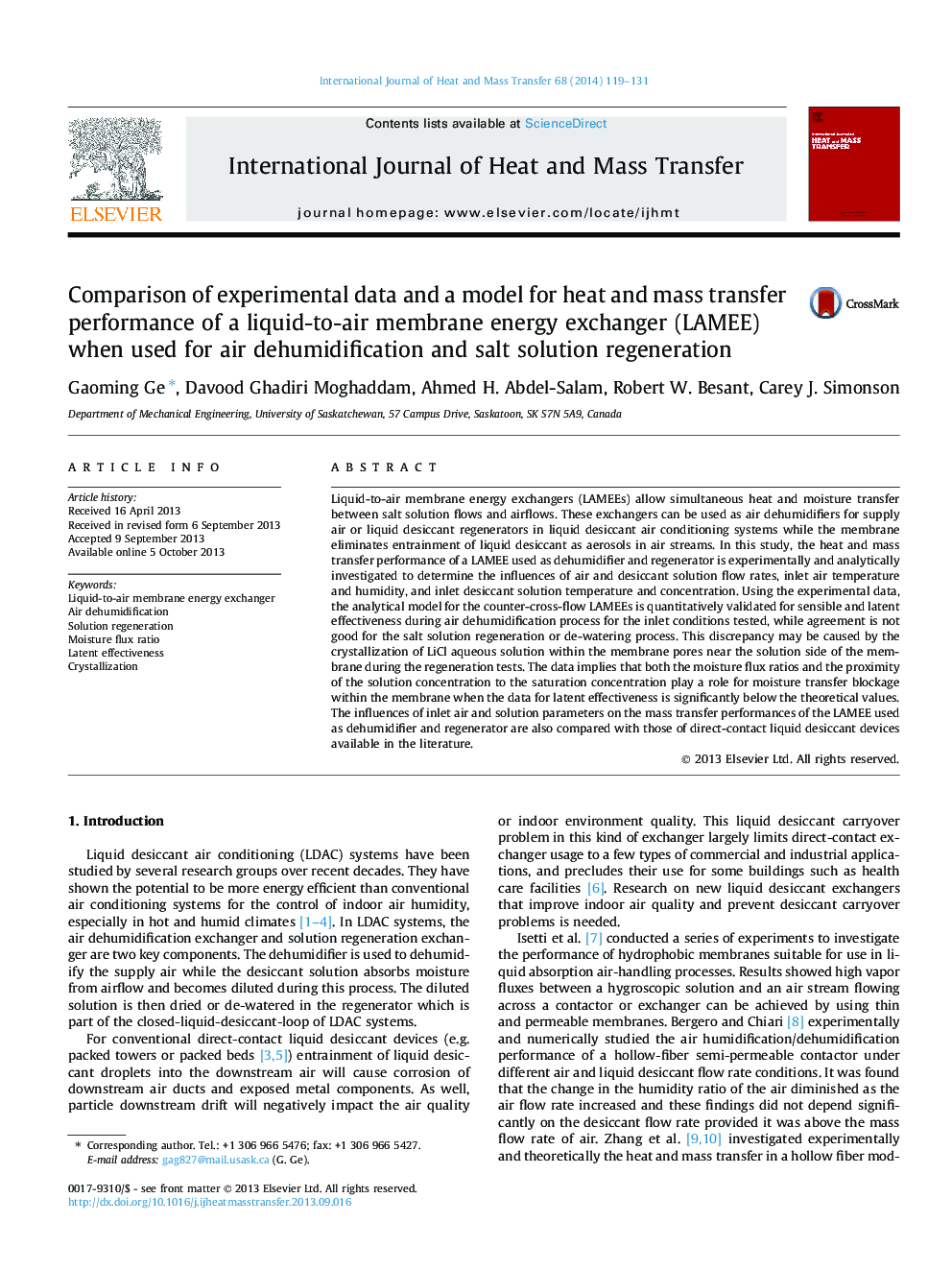| Article ID | Journal | Published Year | Pages | File Type |
|---|---|---|---|---|
| 658032 | International Journal of Heat and Mass Transfer | 2014 | 13 Pages |
Abstract
Liquid-to-air membrane energy exchangers (LAMEEs) allow simultaneous heat and moisture transfer between salt solution flows and airflows. These exchangers can be used as air dehumidifiers for supply air or liquid desiccant regenerators in liquid desiccant air conditioning systems while the membrane eliminates entrainment of liquid desiccant as aerosols in air streams. In this study, the heat and mass transfer performance of a LAMEE used as dehumidifier and regenerator is experimentally and analytically investigated to determine the influences of air and desiccant solution flow rates, inlet air temperature and humidity, and inlet desiccant solution temperature and concentration. Using the experimental data, the analytical model for the counter-cross-flow LAMEEs is quantitatively validated for sensible and latent effectiveness during air dehumidification process for the inlet conditions tested, while agreement is not good for the salt solution regeneration or de-watering process. This discrepancy may be caused by the crystallization of LiCl aqueous solution within the membrane pores near the solution side of the membrane during the regeneration tests. The data implies that both the moisture flux ratios and the proximity of the solution concentration to the saturation concentration play a role for moisture transfer blockage within the membrane when the data for latent effectiveness is significantly below the theoretical values. The influences of inlet air and solution parameters on the mass transfer performances of the LAMEE used as dehumidifier and regenerator are also compared with those of direct-contact liquid desiccant devices available in the literature.
Keywords
Related Topics
Physical Sciences and Engineering
Chemical Engineering
Fluid Flow and Transfer Processes
Authors
Gaoming Ge, Davood Ghadiri Moghaddam, Ahmed H. Abdel-Salam, Robert W. Besant, Carey J. Simonson,
